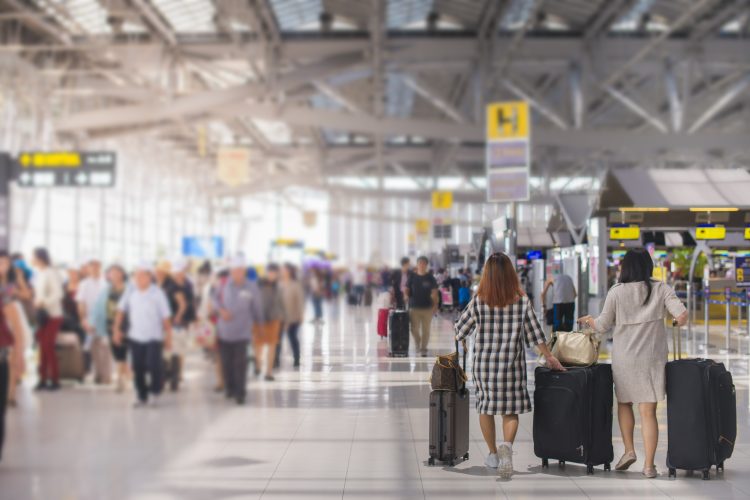Interview spotlight: Kanu Aravind, IBS Software
- Like
- Digg
- Del
- Tumblr
- VKontakte
- Buffer
- Love This
- Odnoklassniki
- Meneame
- Blogger
- Amazon
- Yahoo Mail
- Gmail
- AOL
- Newsvine
- HackerNews
- Evernote
- MySpace
- Mail.ru
- Viadeo
- Line
- Comments
- Yummly
- SMS
- Viber
- Telegram
- Subscribe
- Skype
- Facebook Messenger
- Kakao
- LiveJournal
- Yammer
- Edgar
- Fintel
- Mix
- Instapaper
- Copy Link
Posted: 19 June 2023 | Kanu Aravind | No comments yet
We caught up with Kanu Aravind, Associate Vice President and Head of Digital & Innovation of IBS Software in Issue 2.


Kanu Aravind discusses airport digitalisation and modernisation. CREDIT: IBS SOFTWARE
In Issue 2, Kanu Aravind, Associate Vice President and Head of Digital & Innovation of IBS Software, discussed how airports are undergoing a transformation for the future, how to enhance customer experience through technology utilisation and embraced data‑driven decision making.
1. The pandemic has caused significant disruption to the aviation industry. How are airports responding to the post-pandemic changing landscape?
As we are getting closer to the passenger levels we had before the pandemic, airports are adapting to changing industry trends, and positioning themselves as modern and efficient hubs for travel and commerce.
Embracing the culture change: there is a clear shift in airports from being a public infrastructure to being part of the customer journey. This need to ensure a smooth customer travel experience has compelled airports to expedite their digital transformation efforts. This has also led to airports embracing digital technologies at a much faster pace. They are investing in new and advanced technologies that, under normal circumstances, would have taken years to adopt.
Investment into automation: Airports, regardless of their size and traffic, are making significant efforts to drive digitalisation. Self-service initiatives, particularly self- check-in and self-bag-drop, are a top priority for airports. Staff shortages across the roles and responsibilities have also accelerated to faster adoption of automation in routine repetitive tasks. Also looking into ways, how new technologies like AI/ML can mitigate operational risks for airports.
New streams of revenue: Overall, airports are actively adapting to the evolving needs of travellers by prioritising customer-centric strategies. One obvious reason is the desire to grow non-aeronautical revenue. Airports understand that their success in this area relies heavily on attracting sufficient passenger traffic and encouraging them to spend at the airport. Ultimately, maximising passenger spending is essential for their financial sustainability and growth.
2. What actions should airports take to become an integral component of the customer journey?
If airports want to leave a lasting impression on passengers, they should leverage the power of technology; prioritise customer-centricity, and foster collaboration with airlines, retailers and other service providers to create a cohesive and integrated experience.
Putting customers at the centre of everything is crucial. Airports need to understand customer needs and preferences to deliver personalised services. Whether it is providing tailored information, assisting individuals with special requirements, or creating comfortable spaces for relaxation, a customer-centric approach ensures that passengers feel valued and cared for.
Airports can facilitate the exchange of information among multiple stakeholders and build a connected travel ecosystem. By joining forces and sharing resources, they can offer a wide range of amenities, from unique shopping and dining options to entertainment and cultural experiences that enrich the overall journey.
Airports have the power to go beyond being just a stopover, leaving passengers with positive impressions and a desire to return. It is all about creating experiences that stick with people, making the airport more than just a place to catch a flight.
3. Are there specific areas where airports still have room for further adoption of technology?
One of the overlooked areas beyond the regular airport operations is the airport maintenance and airport asset management. Both these areas can benefit from the adoption of predictive maintenance systems and IoT-enabled sensors. These technologies enable proactive identification and resolution of potential issues before they escalate. This has been richly rewarding for other similar operating environments and airports can replicate those lessons.
Airports have not really utilised the data or not have built enough infrastructure to utilise the data. By leveraging data‑driven decision-making through advanced analytics, airports can optimise various aspects of their operations. This includes but not limited to resource allocation, staff scheduling, and energy management. Having access to accurate and real-time data allows airports to make informed choices that maximise productivity, minimise downtime, and improve overall performance.
Airports can leverage AI based dynamic pricing strategies, similar to airlines to optimise revenue generation and enhance customer experience in various airports services including parking, lounges, and retail offerings, depending on the collaboration with airports stakeholders.
These possibilities comes with certain challenges as well. Current infra at airport is a mix of legacy, on-premise and modern technology stack. Manual processes and restricted connectivity make it difficult to update and distribute real-time information efficiently. Many of these operational systems lack the necessary computational power and resources to achieve real-time information for operational users and personalisation for passengers.
Airports have to really ask deep questions about these systems and plan a long-term approach to modernise key aspects of their operational systems, if they were to benefit from the technology.
4. Can you elaborate on how airports can leverage data analytics to enhance their operations and decision‑making processes?
By analysing passenger flow patterns and historical data, airports can optimise their terminal layouts, security checkpoints, and gate assignments to minimise congestion and improve passenger experience. For instance, airports can leverage data analytics to optimise passenger flow and minimise queues and waiting times. Utilising historic demand patterns, airports can work with stakeholders like border security, immigration office and others to optimise their workload as well.
Data analytics can enable predictive maintenance, identifying potential equipment failures and optimising maintenance schedules to minimise disruptions.
A big part of the airport is the shopping and retail experience. Airports along with their retail partners can leverage data analytics to optimise retail and concession strategies based on passenger demographics and preferences.
A key aspect of data analytics can assist in security threat detection, with algorithms monitoring various data sources to identify potential risks or anomalies. Airports can implement data analytics systems that analyse multiple data feeds to enhance their security operations and improve their capabilities in identifying potential threats.
5. How do you envision the way forward for airports looking to become the smart airports of the future?
Airports have a promising journey ahead, filled with exciting possibilities and innovations that prioritise both passenger experience and operational efficiency.
A key aspect of this vision involves leveraging advanced technologies such as artificial intelligence (AI), Internet of Things (IoT), and data analytics. How data will be used will be a key determinant in making airports smart and ready for the future. This automatically leads to the topic of collaboration. Collaboration among airports, airlines, and technology providers will be crucial. Sharing data and insights will enable airports to make informed decisions, drive continuous improvement, and deliver innovative solutions for passenger satisfaction and operational excellence.
Smarter airports will embrace sustainability initiatives by adopting eco‑friendly practices such as energy-efficient infrastructure, renewable energy sources, and waste management systems. Sustainability is increasingly becoming an important decision parameter in customer choice, and airports implementing the best practices will surge ahead.
The smart airports of the future will have a strong focus on connectivity. Seamless integration of digital technologies, both within the airport and in partnership with transportation networks, will ensure efficient passenger movement and connectivity to smart cities. The rise of EVTOL and regional connectivity/mobility will be key for large and hub airports. How airports and airport operational systems facilitate integration of the new mobility will also determine in airports future.
In summary, the future of airports lies in embracing cutting-edge technologies, personalising the passenger experience, optimising operational efficiency, prioritising sustainability, and fostering collaboration.


Embracing a passion for leading innovation and fostering consulting partnerships, Kanu thrives on developing disruptive technologies that challenge conventional models. Through numerous transformation engagements, Kanu has provided invaluable support to prominent airports, airlines, hotels, online travel agents, and cruise lines in their digital transformation endeavours.
Committed to the belief that travel companies must invest in both technology and customer experience, Kanu actively promotes meaningful digital transformation within the industry. His areas of expertise span a wide range of technologies, including machine learning, natural language processing, intelligent automation, cloud services, and the Internet of Things (IoT).
Issue
Related topics
Digital transformation, New technologies, Operational efficiency


















